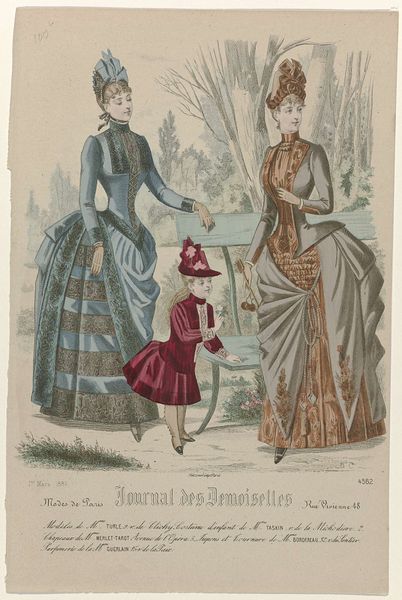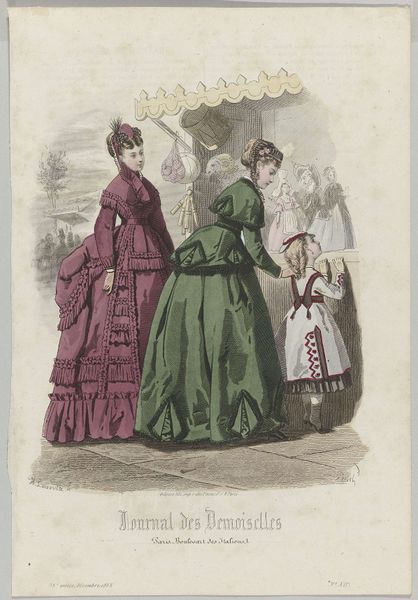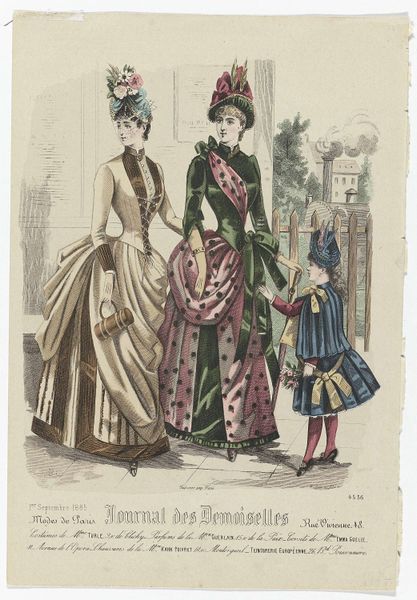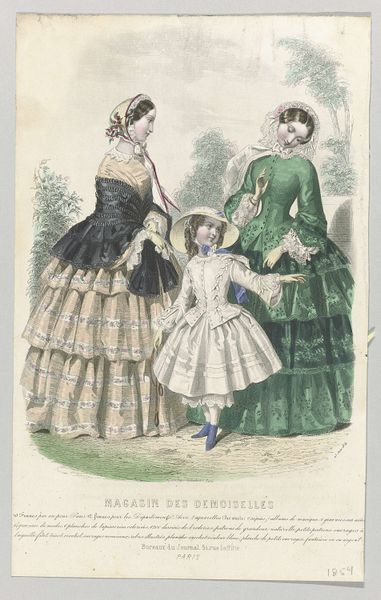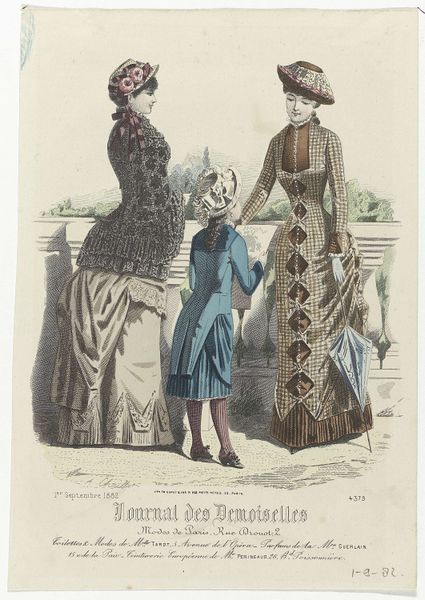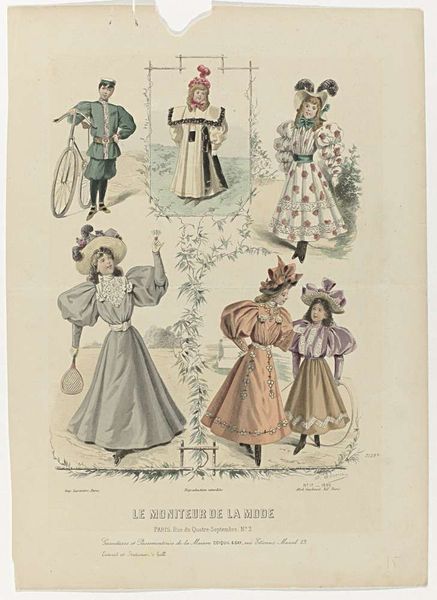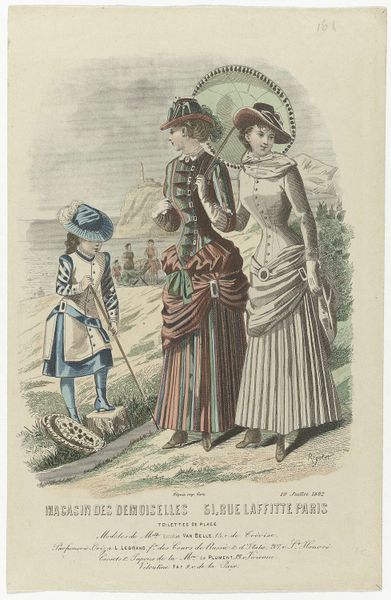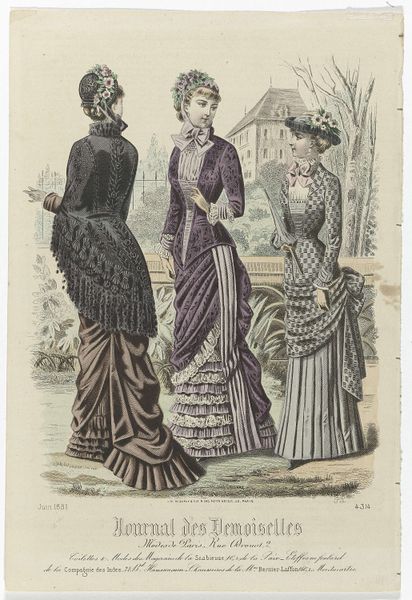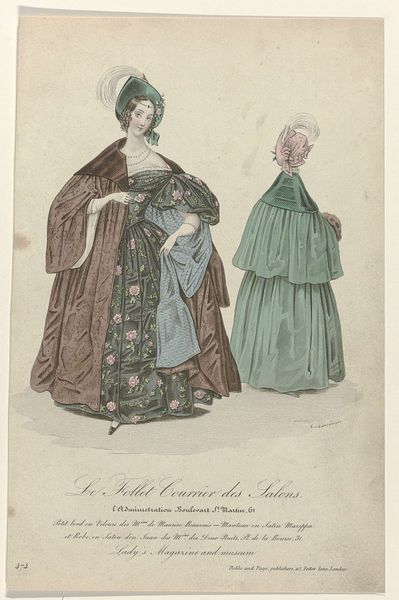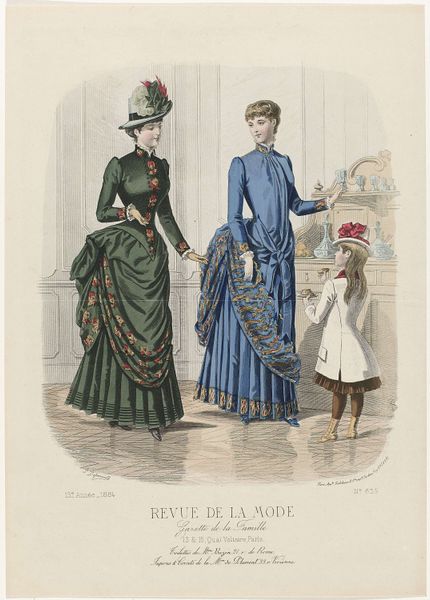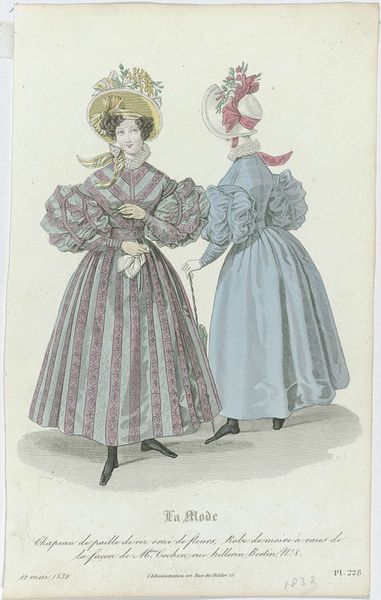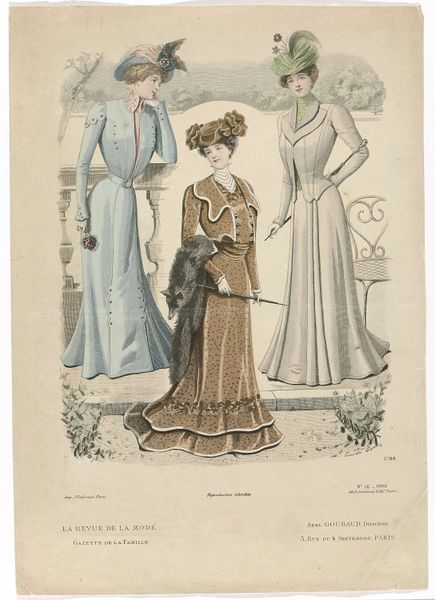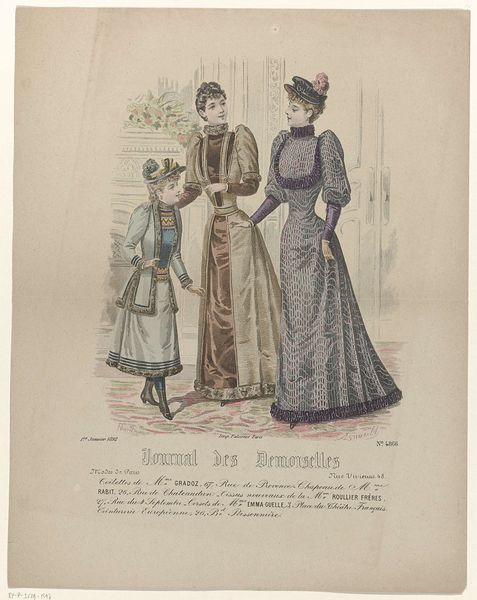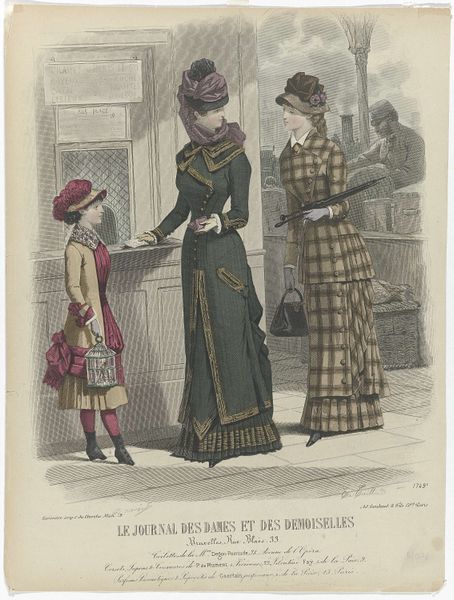
Journal des Dames et des Demoiselles, 1-9-1894, Nr. 3048 T.C. : Toilettes de Mme Thirion (...) 1894
0:00
0:00
#
art-nouveau
# print
#
genre-painting
#
decorative-art
#
dress
Dimensions: height 369 mm, width 269 mm
Copyright: Rijks Museum: Open Domain
Curator: I’m drawn to the slightly melancholic atmosphere created by the subtle color palette. It reminds me of a bygone era, rendered in gentle tones. Editor: Let's consider "Journal des Dames et des Demoiselles," a print from 1894 by Guido Gonin, depicting fashions of the time. It speaks volumes about late 19th-century ideals of femininity and status, and how these ideals were literally embodied. Notice the careful arrangement of figures... Curator: Those mutton sleeves! They're enormous! They’re such a powerful visual marker of the era. But what does it mean to amplify the upper body so drastically, drawing the eye upwards? The print feels strangely reserved and yet assertive. Editor: The restrictive corsets, the elaborate hats, even the child’s oversized sleeves mirror the adults’. Each garment is a symbol. This imagery is inextricably linked to patriarchal structures and expectations for women. What roles were they expected to play? How was female worth measured through outward appearance? This print, for instance, may seem a decorative illustration, but we can view it as a document of women negotiating limited social spaces, constrained but subtly seeking agency. Curator: Do you think these elaborate dresses could be seen as armoring? Almost like the sleeves create a boundary. A deliberate exaggeration can serve to ward off unwelcome gazes, while conforming to period norms on the surface. The clothes say one thing, while concealing intent behind careful placement of fabric and trimming. Editor: Exactly. Fashion never exists in a vacuum. It is an expression of culture, of identity, and power dynamics, which become encoded into garments like these dresses on display. This wasn’t only about covering the body, it was about revealing and concealing societal standings. Curator: Looking again, I notice how the figures seem posed in a tableau rather than engaged in active dialogue. A stillness pervades the scene. The figures become signifiers of aspiration more than tangible personalities. Editor: By analyzing such images through intersectional perspectives, we enrich our engagement with history. We remember that seemingly straightforward representations hold complex truths and unspoken power struggles. This 1894 fashion print prompts us to re-examine representations of women, gender, class, and agency across time. Curator: This exploration allows a richer appreciation of the print’s subtle and intricate web of symbols and statements.
Comments
No comments
Be the first to comment and join the conversation on the ultimate creative platform.
